Last updated on September 8th, 2024 at 01:44 pm
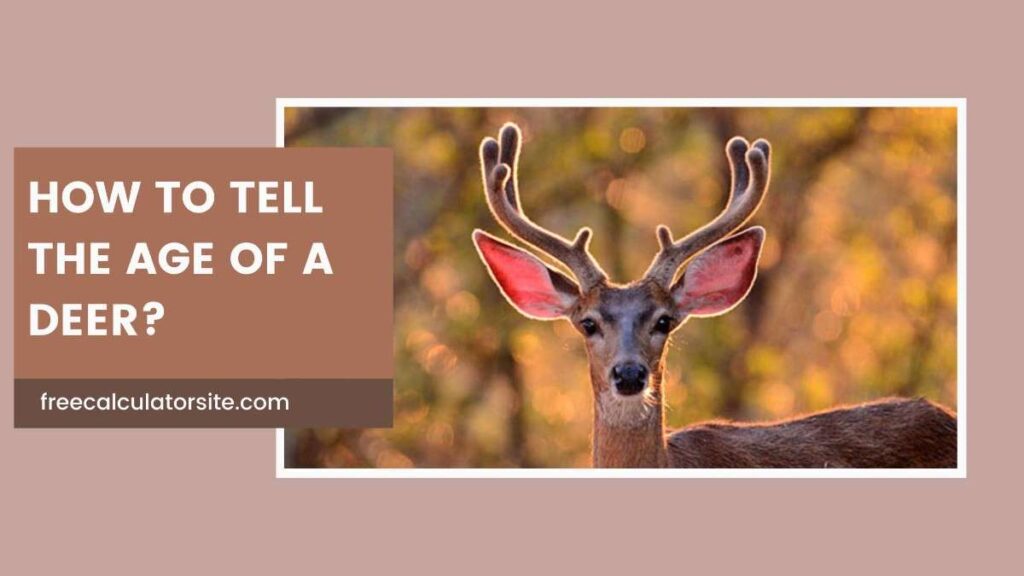
Aging a deer is an essential skill for hunters, wildlife biologists, and land managers.
Whether you’re managing land for hunting or simply observing wildlife, knowing the age of a deer can offer valuable insights into the health, structure, and dynamics of a deer population.
Accurately aging deer helps in making informed decisions that benefit both the ecosystem and hunting practices.
This article will explore various methods to estimate a deer’s age, focusing on physical characteristics observed in live deer (“on the hoof”) and techniques used after a deer has been harvested.
Why Age Matters in Deer Management
Understanding the age of deer is critical for several reasons.
For hunters targeting mature bucks, estimating age helps ensure that younger bucks have the opportunity to grow and mature, contributing to healthier deer populations.
Land managers often aim to maintain a balanced age structure within a deer herd, which is vital for the overall health and sustainability of the population.
Older bucks typically have more developed antlers and contribute to the genetic diversity of the herd by passing on desirable traits.
Moreover, aging deer correctly before taking a shot ensures ethical hunting practices.
Shooting a younger buck that could have matured into a trophy animal not only reduces the quality of future hunts but also disrupts the natural balance of the deer population.
Aging Deer on the Hoof
Aging deer on the hoof, or while they are alive, involves observing specific physical characteristics that change as a deer matures.
Although this method does not provide an exact age, it can help you estimate the age within a year or so, which is often sufficient for making informed decisions in the field.
Here’s a breakdown of how to age deer based on their physical traits:
1. Yearling Bucks (1 ½ Years Old)
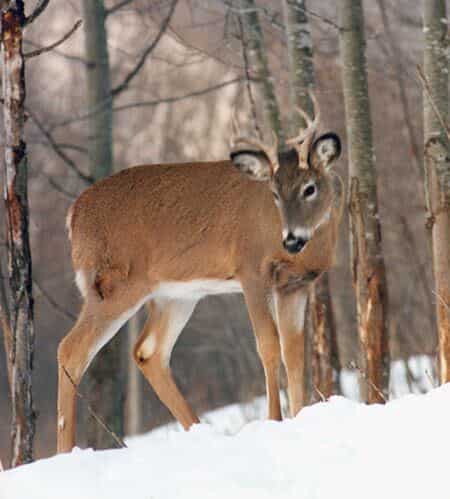
Yearling bucks are often mistaken for does due to their relatively small size.
These young bucks typically have antlers that are about 20-30% of their full potential, often appearing as spikes or small, simple racks.
Physically, their bodies are slender with a noticeable lack of muscle development, especially in the neck and shoulders.
Their legs seem disproportionately long compared to their bodies, and their tarsal glands (the scent glands on the inside of their hind legs) are lightly stained, indicating minimal activity.
2. Young Adult Bucks (2 ½ Years Old)
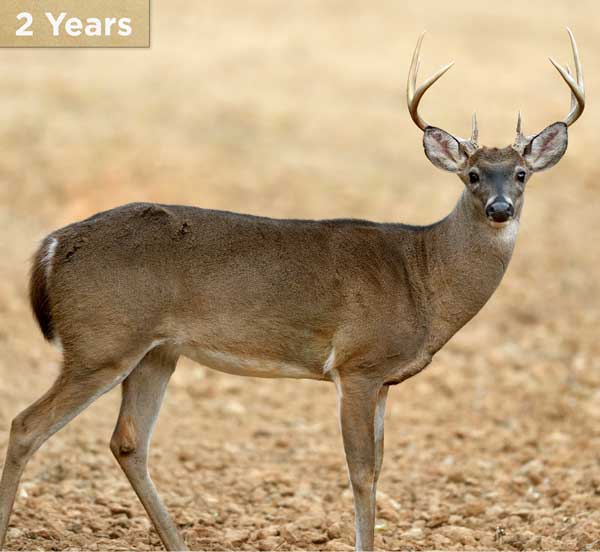
At this age, bucks begin to look more like mature animals but still lack the full development seen in older deer.
Their antlers are more developed, often reaching outside the ears with a typical spread. However, these antlers still represent only about 50-60% of their full potential.
The buck’s body starts to fill out, but the back still slopes slightly, and the belly remains tight.
The neck begins to show some swelling during the rut, and the tarsal glands are moderately stained, reflecting increased activity.
3. Mature Bucks (3 ½ Years Old)

By the time a buck reaches 3 ½ years old, it is often classified as a mature animal.
The antlers are usually well outside the ears, showing considerable mass and tine length, representing about 70-80% of their potential.
The body is more balanced, with a straight back and a slightly filled-out belly.
The neck becomes significantly swollen during the rut, and the legs appear proportionate to the body. The tarsal glands are noticeably darker and more active.
4. Prime Bucks (4 ½ Years Old)
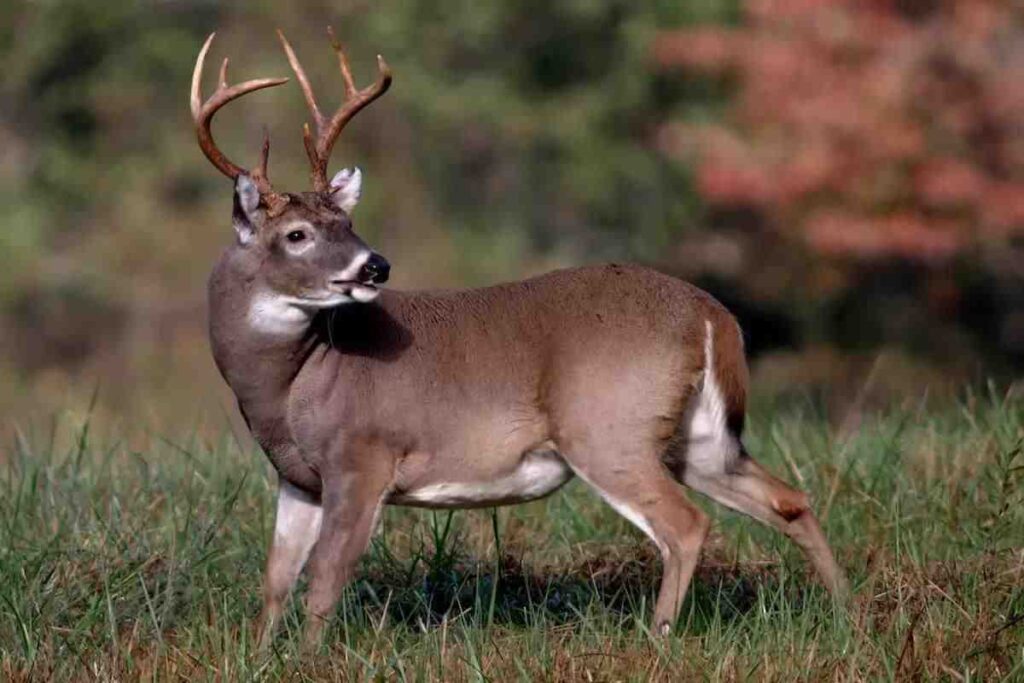
At 4 ½ years old, bucks are in their prime. Their antlers are large, often reaching 80-90% of their full potential, with significant mass and tine length.
The body is fully developed, with a blocky head, a straight back, and a filled-out belly.
The neck is heavily swollen, and the legs, while proportionate, may start to look slightly short due to the body’s bulk. The tarsal glands are heavily stained, indicating high levels of activity during the rut.
5. Senior Bucks (5 ½ Years Old and Older)
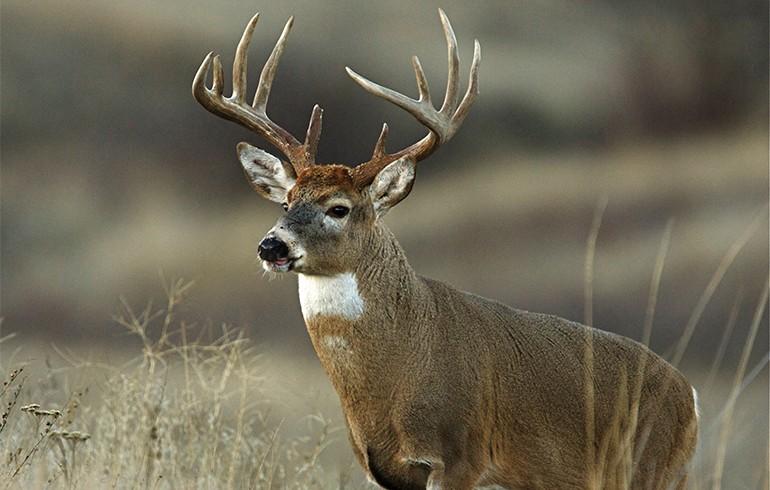
Bucks at 5 ½ years old and older are considered fully mature.
They have reached 90-95% of their antler potential, and their bodies are massive, with thick necks, blocky heads, and a more pronounced sag in the back and belly.
The legs appear short relative to the body, and the tarsal glands are very dark and heavily stained.
At this stage, bucks often show a more pronounced front-heavy appearance as their bodies begin to show the wear of age.
Also Read: How to Tell the Age of a Squirrel
Aging Harvested Deer
While aging deer on the hoof is useful for making quick decisions in the field, more accurate aging methods are available once the deer has been harvested.
These methods provide a more precise estimate of the deer’s age, which can be crucial for record-keeping and long-term management strategies.
1. Tooth Wear and Replacement
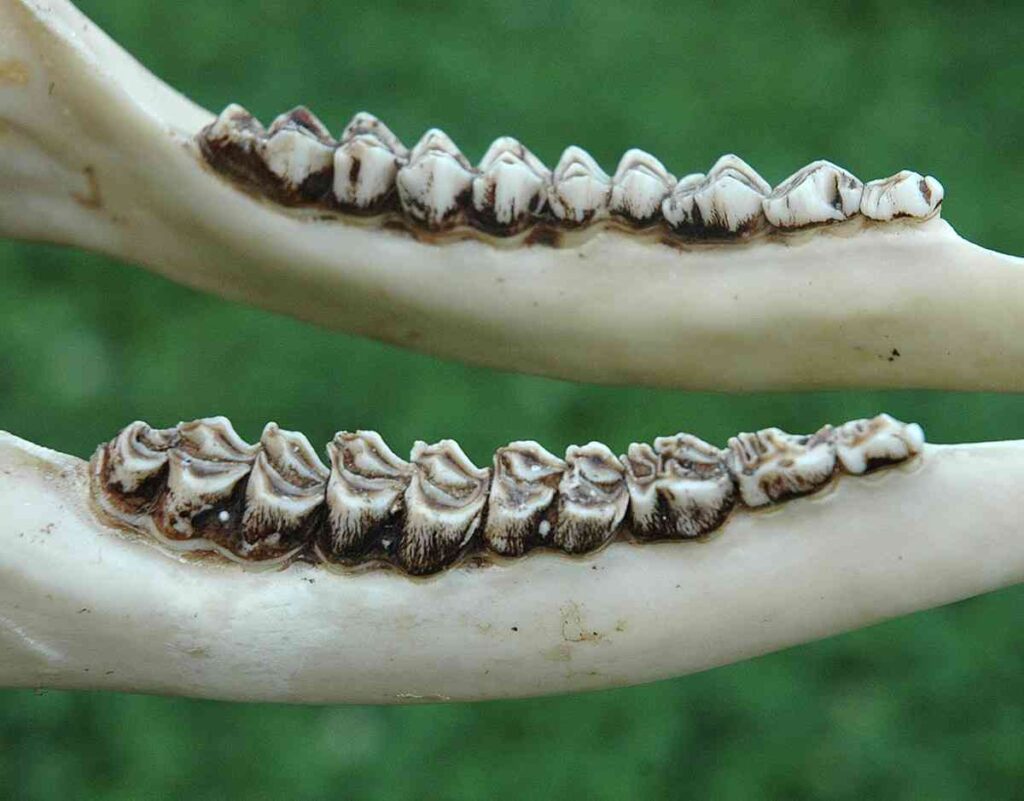
The most common method for aging harvested deer is through examining their teeth, particularly the wear and replacement patterns.
Developed by C. W. Severinghaus in 1949, this method involves looking at the number of teeth and the wear on specific molars.
- Fawns have fewer teeth, typically with only the first molar showing, and little to no wear.
- Yearlings (1 ½ years old) will have six teeth, with the third premolar still in the process of being replaced.
- 2 ½-year-olds show sharp cusps on the molars with minimal wear.
- 3 ½-year-olds begin to show significant wear on the first molar, with the crests becoming blunted.
- Older deer exhibit progressively more wear, with the teeth of 6 ½-year-olds and older often worn down nearly to the gum line.
2. Cementum Annuli
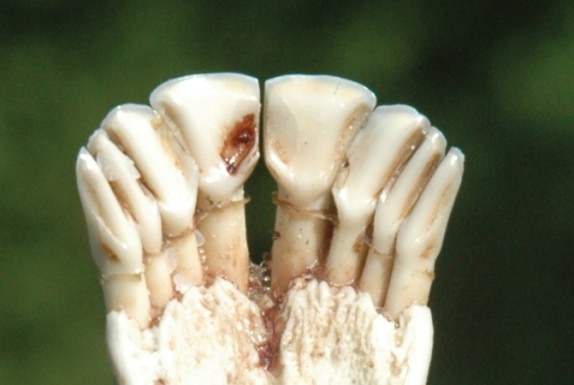
Cementum annuli aging is the most accurate method but requires lab analysis.
Cementum, a hard tissue covering the tooth roots, forms growth rings similar to those in trees.
By examining these rings under a microscope, experts can determine the deer’s age with high precision.
This method is often used for record-keeping or when accurate aging is critical.
3. Skull Plate Thickness
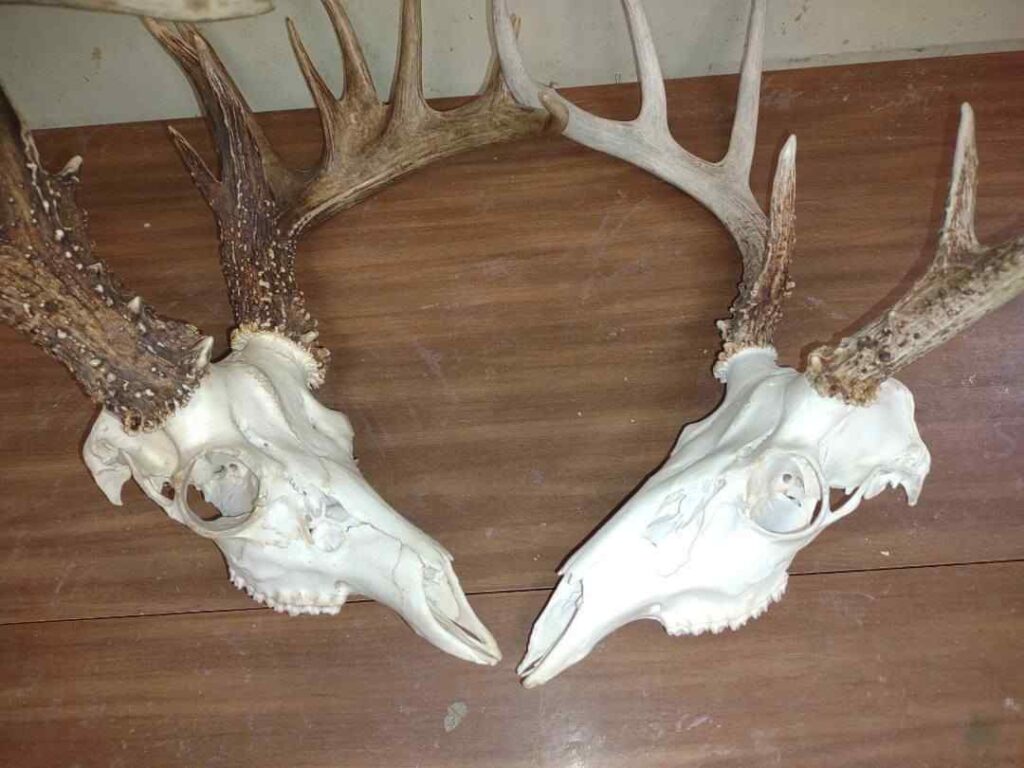
As deer age, the thickness of their skull plates increases.
While this method is less precise than tooth wear or cementum annuli, it can provide additional context when estimating a deer’s age.
Older bucks generally have thicker, denser skull plates compared to younger deer.
Conclusion
Aging deer is a skill that combines observation, knowledge, and experience.
Whether you are aging a deer on the hoof or after it has been harvested, understanding the age of a deer is essential for effective wildlife management and ethical hunting.
By learning to recognize the physical characteristics associated with different age groups and applying more precise aging techniques when necessary, you can make informed decisions that contribute to a healthy and sustainable deer population.

Sayantika Karmakar provides expert insights on financial calculators in her blog posts.
